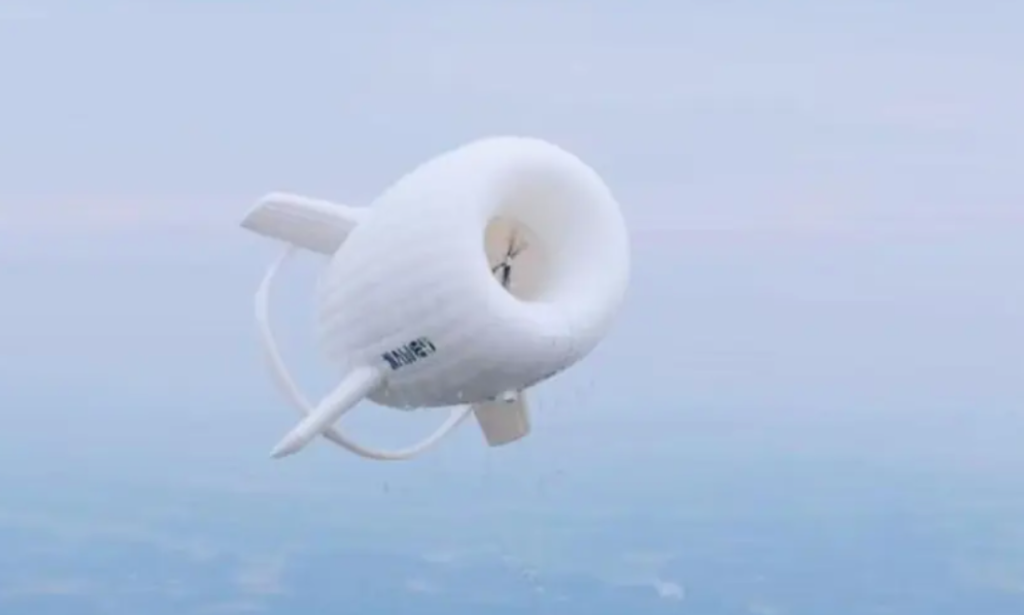World’s first megawatt-level ‘windmill’ airship set to generate power in China

The S500 buoyant airborne turbine working in China. Representative image. China Daily
by Abhishek Bhardwaj [8-25-2025].
The airborne ‘windmill’ produces power equal to a traditional 328-foot wind turbine.
China is getting ready for the flight test of an airborne power generation system, which looks like an airship, and generates power like a turbine.
The research team behind the project says that it is the world’s first megawatt-level floating turbine. It is being projected as a solution for generating and supplying power in remote locations that are difficult to provide power to through conventional means.
The team from China says that the turbine’s capacity is over 30 times more than the best offerings globally.
The announcement regarding the test flight of the one megawatt system was made by Weng Hanke, chief technology officer of Beijing SAWES Energy Technology Company, earlier this month.
S1500 floating turbine
The new system made by the company is S1500, with 1MW energy generation capacity. Weng added that its output is equivalent to a traditional 328-foot (100-meter) wind turbine.
The system aims to make use of the high-speed and steady winds that flow 4,921 feet (1,500 meters) above the ground. Therefore, their efficiency is considered to be much higher than the conventional wind turbines that typically tap wind for energy just 656 feet (200 meters) above ground.
Helium helps the airship-like wind turbine reach optimum heights and carry the power generation equipment. In the sky, the wind energy is converted into electricity and then sent to the ground through a cable.
Weng stated that wind flows roughly three times faster at 4,921 feet (1,500 meters) above ground than it does on land, which means it could increase the power output by approximately 27 times.
The S1500 system has 12 micro-generators in the middle of its duct, which can operate simultaneously. The micro-generators are made of carbon fiber, and the entire weight of one system is less than 2,204 pounds (1 tonne), as per a report by the South China Morning Post.
Past achievements for wind power generation
SAWES developed the floating turbine in collaboration with Tsinghua University and the Aerospace Information Research Institute of the Chinese Academy of Sciences.
This is not the first time that the company has tested a floating wind turbine. Earlier in October 2024, the company had flown the S500 buoyant airborne turbine.
The S500 had reached 1,640 feet (500 meters) above ground and generated power at a rate of over 50 kW. The company then claimed that it had broken two records: the first for the maximum flying time for such a system, and for the power generated.
Weng said it could provide power for emergency rescue, survey, and other purposes. He said that the system could immediately be launched upon the need to provide energy at any site.
Earlier in January 2025, the company flew the more powerful S1000 system, which reached an altitude of 3,280 feet (1,000 meters) with a power output of 100 kW.
This time for the S1500, the company has come up with advanced safety measures – like stopping the release of gas from the aerostat – which could translate into the floating system remaining operational for over 25 years.
Dun Tianrui, the founder and CEO of SAWES, had earlier stated that their goal is to take the floating wind turbine system to 32,808 feet (10,000 meters). The wind flow is up to 200 times stronger there as compared to the ground, and it could lead to significantly higher outputs.